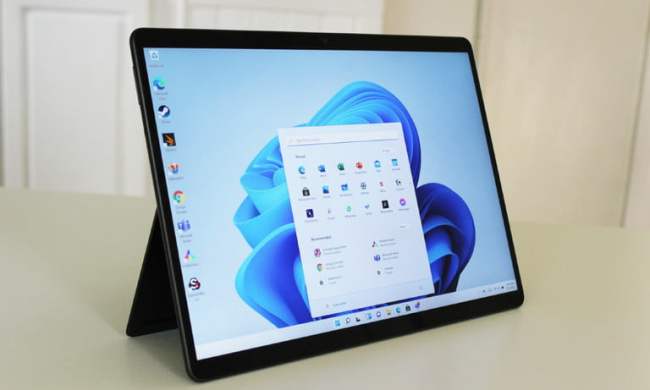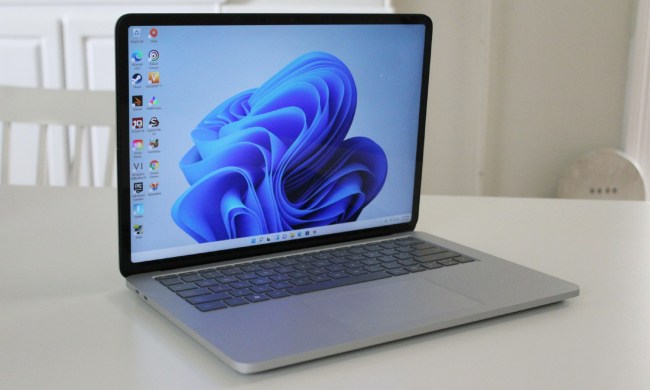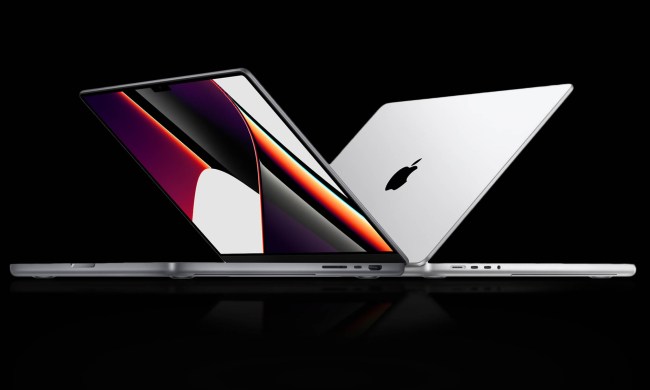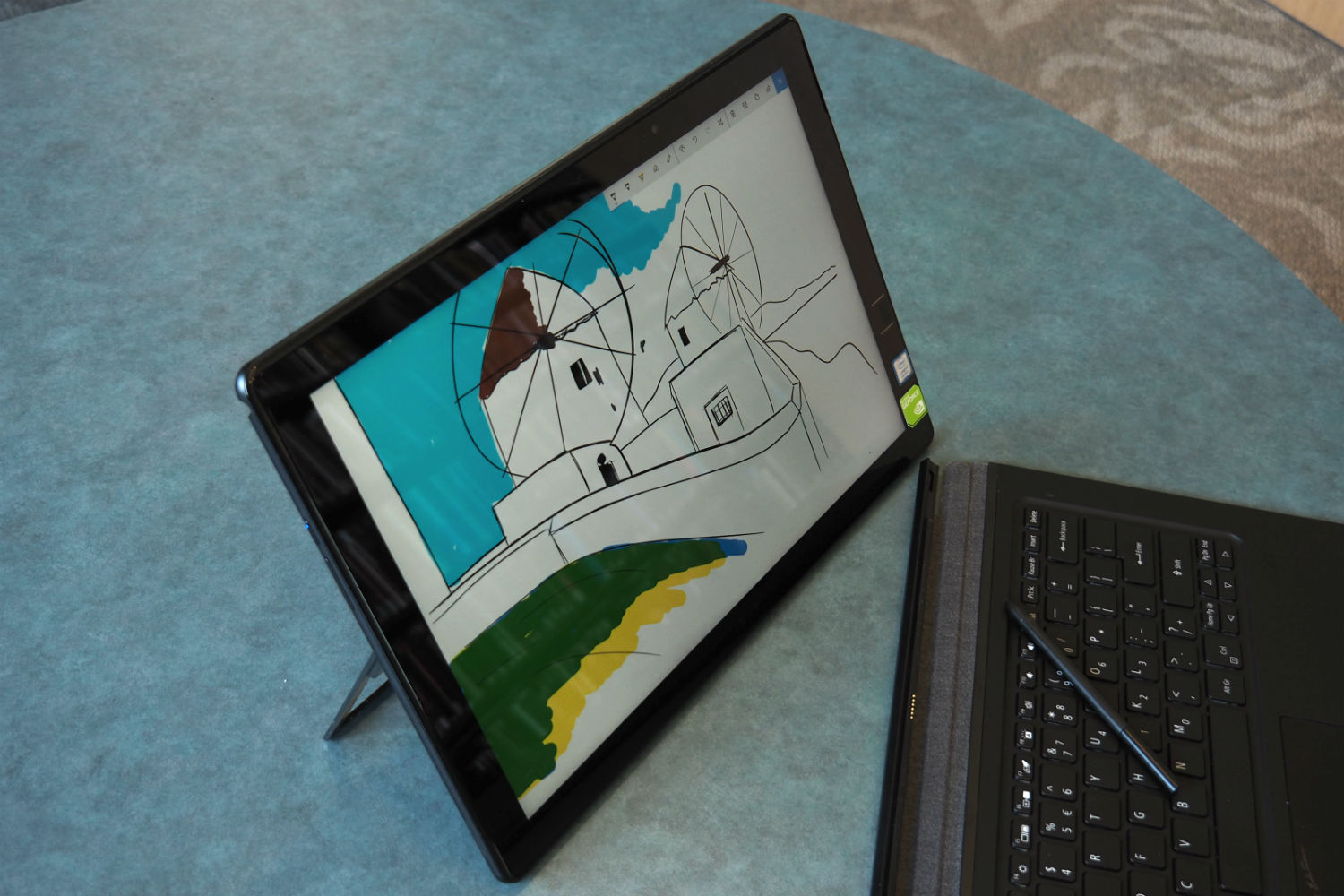
The Windows detachable tablet is probably the most flexible PC around. You can use it on a desktop like a laptop or like a tablet while lying in bed — just tear off the keyboard and you’re holding real PC power in a (usually) very thin and light machine. Usually, that means that performance is limited to mere productivity levels, but Acer has a trick up its sleeve with its Switch 7 Black Edition tablet — a discrete GPU that offers light gaming capabilities.
Microsoft’s Surface Pro is the standard-bearer for the tablet 2-in-1 market, and so we pitted it against the Switch 7 Black Edition to see if the latter’s more powerful graphics give it the edge.
Design
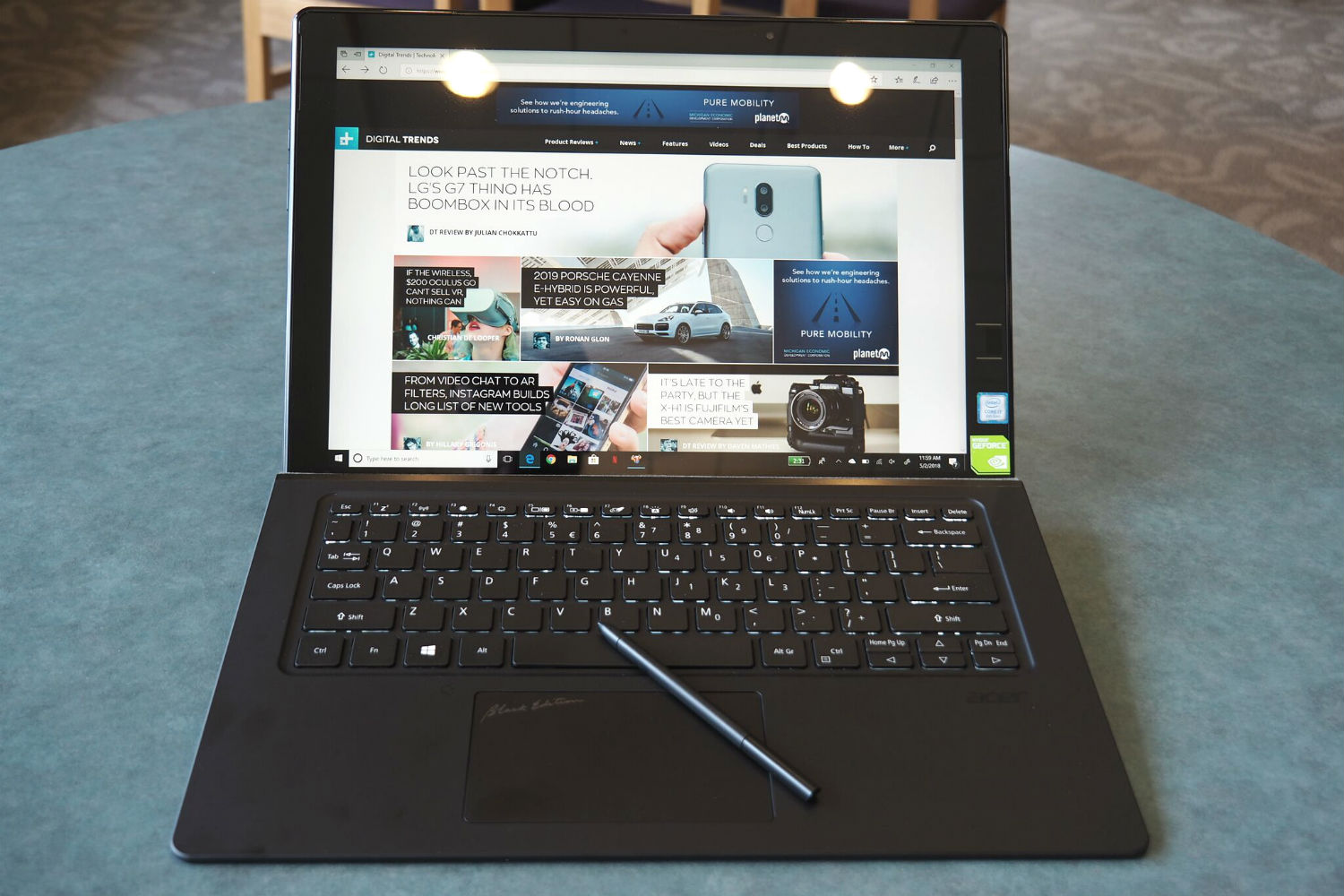
The Surface Pro sports Microsoft’s iconic Surface aesthetic and build, meaning it’s a flat silver-grey color thanks to a magnesium alloy chassis that’s thin, light, and very robust. Overall, it’s a solid-looking and -feeling tablet that’s modern and elegant. You’ll notice a row of vents along the edges for moving in and out for cooling, which is passive in the lower-end Core i5 versions and fan-based in the faster Core i7 models. Connectivity is at a minimum with the Surface Pro, with just a single USB-A 3.0 port and a mini-DisplayPort to go with the usual Surface Connect port for power and docking.
The Switch 7 Black Edition is a different beast entirely. Its aluminum chassis is all-black (hence the name), with only the stainless-steel kickstand’s chrome accent breaking up the stealthy aesthetic. It’s more rounded than the Surface Pro, making it comfortable to hold (although check out the portability section for the downside here), and it’s completely sealed thanks to a liquid cooling system and zero fans. The Switch 7 enjoys both a USB-A 3.0 port and a USB-C port with full-speed Thunderbolt 3 support that promises excellent display and external GPU support along with the most futuristic connectivity.
While the Surface Pro’s kickstand is a simple yet effective flip-out design, Acer got clever with its engineering and built a spring-loaded version that we found a bit clunky in real-life use. Each tablet’s detachable keyboard provides for a fine typing experience with excellent touchpads, and both pens support 4,096 levels of pressure sensitivity and tilt — but the Surface Pen is full-size compared to the Acer pen that’s diminutive and slips into the tablet’s chassis for storage. Which is better comes down to whether you like a heftier pen or the convenience of easy storage, although we’ll note that the Surface Pen is an optional $100 add-on.
Performance

The Surface Pro is stuck with 7th-generation Intel Core processors, up to the Core i7-7660U with an Intel Iris Pro GPU for slightly faster graphics performance than the usual integrated options. The tablet sports a PCIe solid-state drive (SSD) that coupled with up to 16GB of RAM makes for a fast tablet that’s great for the usual productivity tasks. The 12.5-inch display (2736 x 1824 or 267 PPI) is up to the typical Surface standards, with great sharpness, superior contrast and brightness, and a midrange color gamut with decent accuracy.
The Switch 7 Black Edition is more up-to-date, and in fact is one of the first tablets to ship with Intel’s 8th-generation Intel Core i7-8550U. This is a capable CPU that’s both fast under demanding loads and efficient when it’s not being heavily tasked. Acer’s tablet can be equipped with up to 16GB of RAM, while storage is relegated to a slower SATA SSD that’s a few steps behind the faster PCIe specification. In spite of the slower storage, the Acer is simply a much faster tablet than Microsoft’s option.
But Acer went a step further, building in the Nvidia GeForce MX150, a bona fide if entry-level discrete GPU that’s much faster than the Surface Pro’s Iris Pro graphics. That makes the Switch 7 much better equipped for light gaming and for tasks like video editing that can benefit from a faster GPU. The GPU drives a 13.5-inch display (2,256 x 1,504 or 201 PPI) that’s easily the Surface Pro’s equal — a rarity among Microsoft’s competitors — with similarly excellent contrast and brightness and slightly better color gamut and accuracy.
Portability

The Surface Pro’s 12.5-inch display and relatively small bezels make for a truly portable tablet. It’s incredibly thin at 0.33 inches without the detachable Type Cover (which is an optional accessory at $160) and very light at around 1.7 pounds depending on the CPU. The 45 watt-hour battery capacity provides close to all-day longevity, which is very good for a tablet 2-in-1.
The Switch 7 is a very different animal, with its larger 13.5-inch display that’s surrounded by relatively wide bezels that make for a much larger tablet in width and height. It’s thin enough at 0.39 inches, but it’s also roughly a pound heavier. And, it only packs in 37 watt-hours of juice, making for battery life that’s significantly less and that makes it more likely that you’ll also need to carry along a power brick.
Conclusion

We like the Switch 7 Black Edition’s performance, particularly when entry-level gaming or running demanding creativity apps. But the Surface Pro is so much smaller and lighter and easier to carry around, and it lasts for longer away from a plug.
We think fewer people are looking for gaming tablets but rather want something that’s easy to tote and take notes on, and that makes Microsoft’s Surface Pro the overall winner in this shootout. Just note that you’ll spend $1,700 for the Switch 7, while the similarly equipped Surface Pro with keyboard and pen will run a much heftier $2,460.
